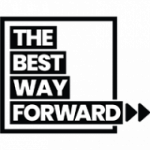How to turn any content into an action-oriented one: The 4 never-failing ingredients
If you’re a consultant, a facilitator, a business trainer, a business or other coach, a speaker or a copywriter, you understand how emotions are a vital element in the experience we deliver to our attendees, participants or customers.
Sparking emotions has a tremendous effect in helping people open up and thus better absorb new inputs.
However, if we want to nail it, tying our content to an actionable outcome is equally valuable ─ though often neglected.
Based on my experience, with a considerable number of occasions, as a project manager, an event organizer and a learning-focused operational, I know that the content we share and the experiences we deliver, often, fail to lead to action afterwards.
Though “experiential learning” and “hands-on workshops” lead to a much better understanding of the intended implementation; we still seem to not maximize execution, on a permanent basis.
I am sharing what I call «The 4-never-failing-ingredients» that can transform any content to an action-driven one, to make a real impact afterwards.
It is designed to help you make a 100% hit out of your meetings, projects, presentations, speeches, learning sessions, articles and events.
This is a work-in-progress list, so let me know what works for you from the list or what to add to it.
1-Before getting started, everyone needs to define the specific end-goal they are looking to achieve
It is not new that “starting with the end in mind” can help us define what we aim to achieve.
However, most content creators and presenters tend to start by defining potential outcomes they come up with ─ which might make sense to everybody but are perfect for nobody.
More skillful presenters start with why in a broader sense.
However, even the “why” we come up with, might not be true to everyone.
Only each one of us knows what one content might help us for.
The more we relate personally with our own “what for”, the more effective the content will be, as a result.
So, what we need to do in advance is to get everyone to ponder (at least to themselves. Yes privately.) on the one question that shall put everything into perspective.
They need to do this before getting started or right in the beginning.
This one very crucial question is:
“What is the current issue I am trying to resolve through this learning?”
Everyone needs to articulate it, to be very specific, to put a metric on it and to link it to a specific date if possible.
Then revisit this “what for” at the end of the session.
A heads-up: This is different from the usual “Objectives of the Training.”
What we often do is listing bulleted potential outcomes after the phrase:
At the end of this session you will be able to:
- do this
- do this
- do this and
- do this
I hope you’ll find that adding this simple, yet efficient element, in the first part of the flow, will put things into perspective and help everyone get clear on how you can help them get, where they want to go.
A note for the reader:
If you are a professional trainer, facilitator, consultant, coach, speaker or copywriter, I am sure you understand why and how to make use of this point.
If you are an entrepreneur, freelancer, corporate executive or a lifelong learner, you will benefit enormously by doing this on your own.
When you are not asked to do it, do it anyway.
2-Tie the content to specific proposed actions to be executed right away (ideally: same-day actions | 10 days | 30 days | 90 days)
When we share information, a new method, tools, and tactics, but do not link them to specific business actions (or other outcomes) ─ we are sharing nothing on the HOW.
People lack a frame of reference, which is why we end up getting zero results too.
There is a specific skill in crafting playbooks, roadmaps, and guidelines that people WILL actually use. That is whether they’re meant to guide yourself on an upcoming project, help the team you will work with or guide others who are running their own gig.
This is not about “sharing best practices” and “setting a few basic rules” to “act with autonomy inside the framework”.
We are getting this a lot, and it rarely works.
On the other hand, people hate being told in a top-down way what they should think, feel and know.
It is why top-down lectures are both oppressive and dull.
But my experience also tells me that by just fitting in an “Action Plan” part and assuming that this will secure engagement and even commitment, is also not working.
What I have found to work time and again is this:
During the session involve everyone in their own learning, by allowing the exchange, the feelings, and the practice to flow throughout the entire session (and even before) but then at the end give away actionable steps of what COULD be done next ─ without feeling that this is very top-down.
After this, you will allow everyone to tweak accordingly in order to fit their own “what for” and conditions, but at least they know where to start from.
These guidelines must be crafted with the following two elements, and in the ideal doses:
- They need to be, when appropriate, broad enough so that everyone can have abundant room for maneuvering and can adapt accordingly to “own the way” and make it work for them.
- And, also when appropriate, they must be tight enough, similar to a manual with instructions. So that everyone can take the tried-and-true path and use the right tools at the right time to get to the results they are after, in the fastest possible way.
Very few do this.
You will be surprised by the outcomes.
Of course, there is a whole deal of work needed to be done in advance by you and the event organizer or content endorser.
A heads-up: This is different from the usual “Action plan.”
We shall provide the “contour” of the expected actions.
Then the participants will “color it inside” with their own situation, rhythm, skills, and pursued goal.
Sharing what is the expected implementation is the proven way to get people moving toward their goal in a predictable and repeatable manner; so, they can maximize their chances to get to the results they are after.
3-Make sure the expected implementation is understood by the individuals involved.
This is important and also works in a very participative way.
Get participants to share back to you and the rest of the participants, what they understood to be the most important “Next Steps”.
People often tend to cherry-pick things to fit their situation or skills and ignore the rest.
Sometimes it’s fine, but sometimes it’s not.
Make sure you get at least ONE thing, the 1st step clearly perceived as it was meant to, by everyone.
If the 1st step is NOT your own decision to make, then make sure you have it confirmed in advance with the initiator, the managers, the strategy, the initial endorser, the other stakeholders.
Depending on the familiarity of the participants with the subject you can then hand them out a whitepaper memo / send a link / a website / share a video or take a photo (or anything) of a written set of “To-Dos”.
Ideas: This can be in a form of a “Memo Card of the Next Steps”, “Remember to” printed post-its, “How To Deploy” guide, “New daily habits to adopt”, “Day-to-day of Week 1” or “a detailed manual”.
It makes everyone better connect everything and it is highly appreciated.
This refers back to what was shared in point No 2 (above), but give it away AFTER you have let people share back to you “what is understood”.
A heads-up: This is different from the usual “Let’s make it happen” slide at the end with a motivational quote, coupled with uplifting music.
You can do that afterwards, but don’t ignore the giveaway what will make their life easier.
Make implementation an integrated element of the content and your session.
4-Fit in your event or content a built-in accountability system to help follow-through the intended implementation.
From this point on, it is all about the continuity of your event, the sustainment of the enthusiasm and the intended implementation.
What we often miss though, is to make THIS ingredient an integrated part of the event.
Instead, we trust that someone else will take care of this, in their action plans.
Everyone needs to know that follow-up WILL be happening and that it IS planned.
Therefore this element HAS to be announced, before leaving the room or the screen.
However, it is either you that will take responsibility for this part or you will have to delegate it back to the initial parts involved.
The objective is to create official moments of exchange to assess the success of the implementation, take corrective actions and reassure follow-through.
It can be anything from booking “weekly / monthly meetings”, working with a “group project App” or setting-up pre-defined tandems with “Accountability Partners” (or the newest term: Success Partners) to support action-taking and giving feedback during follow-through.
We all become more systematic and more responsible when others are involved ─ even more so when they depend on us.
Making the phase following the event “a real thing” makes it clear to everyone that it all starts the day after the content, the talk, the event, the meeting happens ─ It does not just stop there.
A heads-up: This is different from just sharing your contact details:
“Here is LinkedIn Profile
And “if you have any questions send them at me@mymail.com”
There are tons of ways you can make the sustainment part, a part integrated into your design, so that you make it impossible for people to not take action.
Before you go:
This is a tried-and-true system that I have experience with, have experimented with and have tweaked tons of times.
Take whatever works for you and make it your own.
I am positive that after integrating these elements into your contents and events, you will definitely see a big impact in the consequent action taking.
__
PS: This is not a definitive list, so I would love to learn what else works for you, in your respective events.
I also host Online Meetups frequently, to exchange on these matters, with other professionals.
Let me know if you are interested in attending one.
For more stuff on how to take massive action to make things happen on your business, join me on Medium, LinkedIn, Instagram, Facebook, Twitter, and let’s work out “The Best Way Forward”, together.

